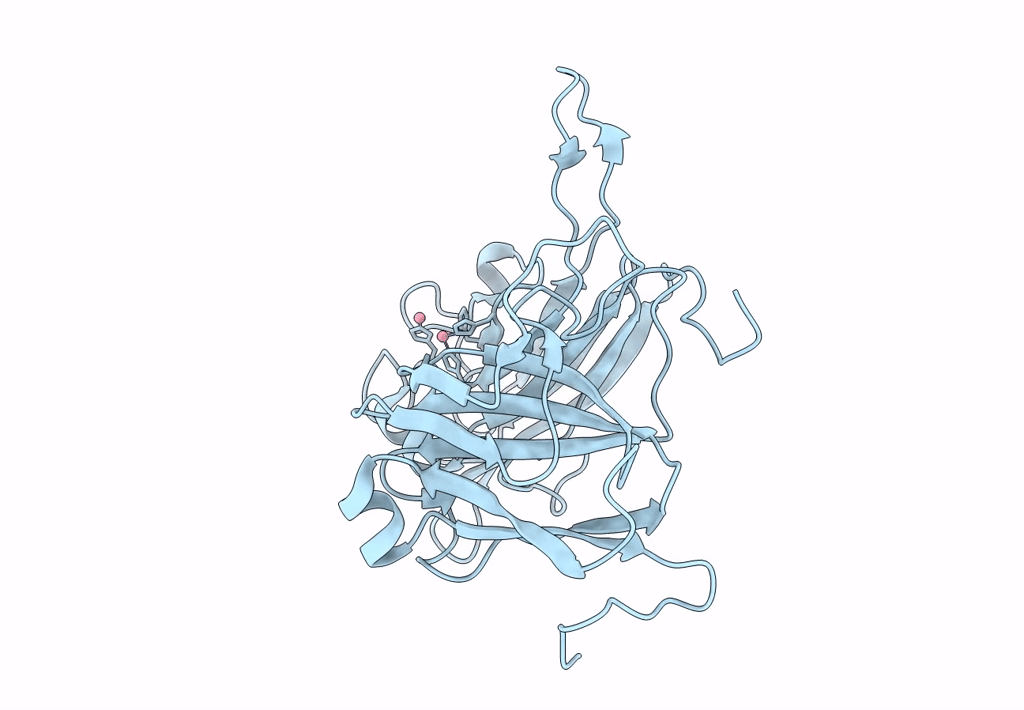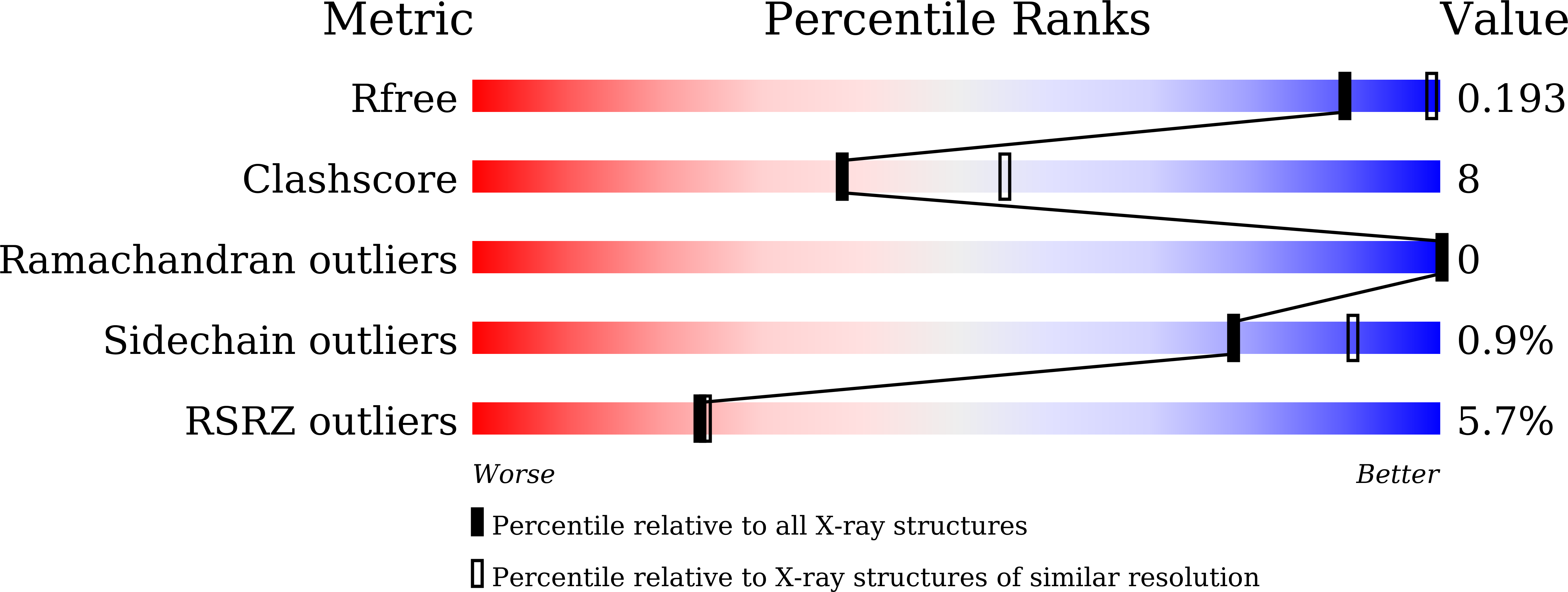
Deposition Date
2021-12-02
Release Date
2022-11-09
Last Version Date
2023-11-29
Entry Detail
PDB ID:
7W6V
Keywords:
Title:
Crystal structure of a dicobalt-substituted small laccase at 2.47 angstrom
Biological Source:
Source Organism:
Streptomyces coelicolor A3(2) (Taxon ID: 100226)
Host Organism:
Method Details:
Experimental Method:
Resolution:
2.47 Å
R-Value Free:
0.19
R-Value Work:
0.18
R-Value Observed:
0.18
Space Group:
P 43 3 2


